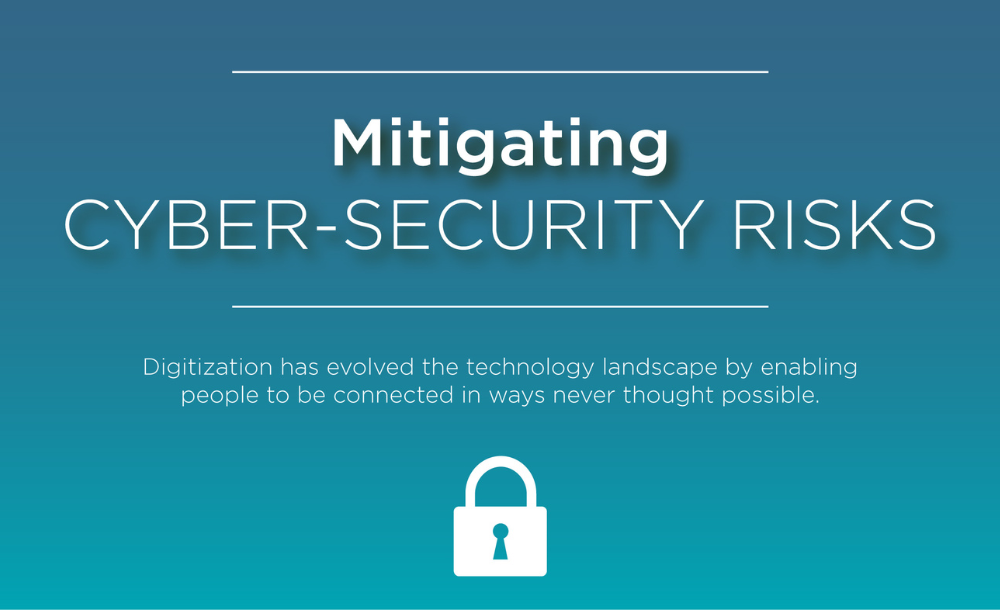Welcome to the modern interconnected world. Where digital transformation has reshaped every facet of our lives and the imperative for robust cyber safety measures has reached unprecedented heights.
The rapid proliferation of technology has ushered in a new era of risks and threats. These have necessitated a paradigm shift in our approach to security. Amidst this landscape, data analytics have emerged as an ally to unlocking the secrets of cyber safety.
Embark on a captivating journey as we delve deep into the intricate tapestry of advanced analytics, fraud detection, and cybersecurity.
Brace yourself to unravel the enigma that lies behind the veil!

We will navigate the complexities of cyber threats and reveal the indomitable power of data analytics in the battle against such risks.
Gone are the days of reactionary defenses, where organizations languished in the aftermath of attacks. Today, propelled by the boundless potential of data, we embrace a proactive cybersecurity approaches. These grant us the power to outpace even the most cunning adversaries.
By harnessing the incisive capabilities of data analytics, we:
- unravel concealed patterns
- illuminate hidden anomalies
- forecast potential threats before they materialize
Throughout this article, we will explore the various ways data analytics contributes to cyber safety, including its applications in fraud prevention, threat detection, and incident response. We will showcase real-world examples and success stories that highlight the transformative impact of data analytics in bolstering cyber defenses.
Data analytics for enhanced cybersecurity
Empowering organizations with proactive cybersecurity insights
In the fluid terrain of cyber threats, organizations are increasingly realizing the limitations of traditional reactive security approaches. Organizations require proactive cybersecurity strategies that not only detect and respond to attacks but also prevents them from occurring in the first place.
Enter data analytics, a game-changer in the realm of cyber safety. By harnessing the power of data analytics, organizations can:
- fortify their defenses
- anticipate potential threats
- stay one step ahead of cybercriminals
According to a report by IBM, 83% of organizations have had more than one data breach in 2022. This highlights the vital importance of taking preventative measures against these threats.
Unveiling the potential of data analytics
Data analytics offers a transformative approach to cybersecurity. Using advanced techniques to make sense of vast amounts of data generated in today’s digital world.
Organizations can gain invaluable insights into potential vulnerabilities and emerging attack trends, by analyzing diverse data sources. These include:
- Network logs
- User behaviour patterns
- Threat intelligence feeds
This proactive approach enables timely identification of potential threats. Which in turn allows for swift action before such threats escalate into full-blown security breaches.
The key to effective data analytics in cybersecurity lies in its ability to detect patterns and anomalies that may indicate malicious activity. Machine learning algorithms and artificial intelligence models play a crucial role in this process. They enable the detection of subtle indicators that may go unnoticed by traditional security systems.
Strengthening cybersecurity with data-driven insights
Here are handy tips for strengthening your cybersecurity via data analytics:
- Implement real-time monitoring and analysis of network traffic to detect anomalies and identify potential threats.
- Leverage machine learning algorithms to develop predictive models that can anticipate and mitigate emerging cyber threats.
- Employ behavior analytics to identify abnormal user activities and detect insider threats.
- Use data analytics to assess the risk posture of systems and prioritize security measures based on potential vulnerabilities.
- Establish a centralized security analytics platform that consolidates data from multiple sources for comprehensive threat analysis. Analyzine DMARC reports within data analytics platforms to gain granular visibility into email security, unveiling hidden patterns and potential threats for proactive response.
Detecting and mitigating cyber threats

Detecting and neutralizing cyber threats
Cyber threats lurk in the shadows of the digital landscape, posing significant risks to organizations and individuals. With the ever-increasing sophistication of attacks, traditional security measures alone are no longer sufficient.
Enter data analytics!
This game-changer that empowers cybersecurity teams to detect and mitigate threats that would otherwise go unnoticed.
Unmasking threats through data analytics insights
By harnessing cutting-edge techniques and technologies, organizations can extract valuable insights from vast volumes of data. This data will assist them to identify, analyze, and respond to cyber threats effectively. Data analytics enables cybersecurity teams to stay vigilant and one step ahead of potential threats.
A study by Accenture indicated that tore than half (55%) of large companies are not effectively stopping cyberattacks. Additionally, these companies are not finding and fixing breaches quickly, or reducing the impact of breaches rapdifly enough.
Data analytics for cyber threat detection and mitigation
These are some of the ways employing data analytics in cyber threat detection can benefit your organiszation:
- Utilize machine learning algorithms to develop behavior-based models that can identify deviations from normal network patterns, swiftly flagging potential threats.
- Implement real-time log analysis and correlation techniques to identify suspicious activities, enabling prompt investigation and response.
- Employ artificial intelligence-powered threat intelligence platforms to aggregate and analyze massive volumes of security data.
- Deploy advanced user behavior analytics to detect anomalous activities and detect insider threats.
- Employ data analytics to perform comprehensive vulnerability assessments, identifying weaknesses in systems and infrastructure before they are exploited.
Understanding the landscape of online fraud
Unmasking the threat of online fraud
In today’s digital era, online fraud has become a pervasive threat that targets individuals, businesses, and even governments. Understanding the current landscape is crucial in developing effective measures to stop and prevent online fraud.
Decoding the complexities of online fraud
Online fraud encompasses a broad range of deceptive activities that exploit vulnerabilities in digital systems and target unsuspecting individuals. These can include:
- phishing
- identity theft
- financial scams
- social engineering
Criminals employ cunning tactics to compromise security and exploit personal information for illicit gains. To counter this, organizations and individuals must be equipped with knowledge and insights about the different types of online fraud and the methods employed by fraudsters.
Data analytics to combat online fraud
These handy tips will help you to get started on your journey to digital safety:
- Implement real-time transaction monitoring systems that leverage data analytics to detect and flag potentially fraudulent transactions, minimizing financial losses.
- Apply predictive analytics to assess historical fraud patterns, enabling organizations to proactively identify emerging fraud trends and adapt their prevention strategies accordingly.
- Integrate data from various sources, such as transaction logs, user profiles, and external threat intelligence, to create a comprehensive fraud detection system.

Safeguarding digital ecosystems
Are you seeking an effective method of safeguarding your digital ecosystems?
Look no further! We have the perfect solution for you.
The vulnerabilities of digital ecosystems
Digital ecosystems encompass the interconnected networks, systems, and devices. These ecosystems enable seamless communication, collaboration, and transactions. However, these ecosystems are susceptible to a multitude of threats, including:
- cyberattacks
- data breaches
- system vulnerabilities
The dynamic and complex nature of digital ecosystems demands robust security measures that can detect and address threats in real-time.
Strengthening digital ecosystems with data analytics
Consider implementing some of the following tips:
- Implement continuous monitoring and threat intelligence systems that utilize data analytics to detect and respond to potential security breaches promptly.
- Utilize network traffic analysis and anomaly detection techniques to identify unusual patterns or suspicious activities within digital ecosystems.
- Employ data-driven risk assessment and mitigation strategies to proactively identify and address vulnerabilities in digital infrastructure.
- Implement robust access control mechanisms and user authentication systems that leverage data analytics to detect and prevent unauthorized access attempts.
The human element
Empowering the human firewall
In the realm of cybersecurity, the human element remains a critical factor that can make or break an organization’s defenses. When harnessing the power of data analytics, organizations can augment cyber safety by:
- understanding human behavior
- detecting insider threats
- fostering a culture of cybersecurity awareness
The human factor in cybersecurity
Despite technological advancements, humans continue to play a pivotal role in cybersecurity. Whether it’s employees, customers, or stakeholders, their actions and decisions can impact an organization’s security posture. Understanding human behavior, motivations, and vulnerabilities is key to building a robust cybersecurity strategy that accounts for the human factor.
In a study by the Ponemon Institute, according to 78% of respondents, their organizations experienced a data breach as a result of negligent or malicious employees or other insiders. Indicating the need to educate employees in this regard.
Enhancing Cyber Safety through Data Analytics
Your organisation can enhance cyber security by enacting the following:
- Utilize user behavior analytics to identify anomalies and deviations from normal patterns, enabling early detection of potential insider threats or compromised accounts.
- Employ sentiment analysis and natural language processing to analyze user communications, detecting indications of phishing attempts or social engineering attacks.
- Use data analytics to create personalized cybersecurity awareness programs that target specific user groups, addressing their unique needs, and promoting best practices.
- Implement gamification techniques and interactive training modules that utilize data analytics to track user progress and encourage active participation in cybersecurity training.
The data analytics advantage
Data analytics has emerged as a game-changing force, fortifying cyber safety in today’s interconnected and digitally innovative era. By deciphering complex patterns and anomalies within extensive datasets, organizations unveil hidden techniques used by cybercriminals, enabling the development of robust countermeasures.
This data-driven approach not only enhances fraud prevention but also fosters trust in digital transactions. Which in turn inspires businesses and individuals to thrive in an ever-evolving ecosystem. Integrating data analytics into cybersecurity strategies reveals the significance of the human element, empowering proactive defenders against evolving threats. Organizations can stay ahead with advanced algorithms and predictive analytics. Assisting them to proactively safeguard digital assets against emerging cyber threats. As data analytics continues to shape cybersecurity practices, it ensures resilience, security, and fosters trust in our interconnected world.

Ready to unlock the potential of AI and data science? Take your skills to the next level with our comprehensive courses and cutting-edge services.
At TDS, we specialize in providing top-notch AI and data science training that equips you with the knowledge and tools to excel in this rapidly evolving field. Our courses cover a wide range of topics, including sentiment analysis, natural language processing, machine learning, and more.
Whether you’re a beginner or an experienced professional, our expert instructors will guide you through hands-on exercises and real-world case studies, ensuring you gain practical skills that can be applied immediately.
In addition to our courses, we offer tailored AI and data science services to help businesses harness the power of these technologies. From sentiment analysis to custom machine learning models, our team of seasoned experts will collaborate with you to drive actionable insights and accelerate your success.
Don’t miss out on the opportunity to stay ahead in the AI revolution. Visit our website at [Your Website URL] to explore our courses and services and embark on your journey towards AI and data science mastery today.
Unlock the power of AI and data science. Join us on this transformative journey and unleash your potential.

